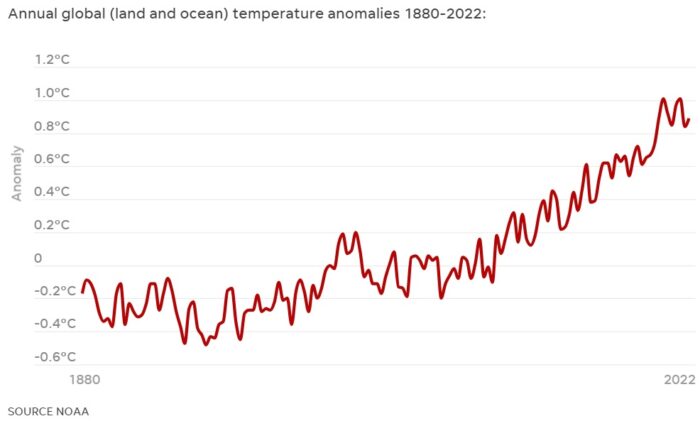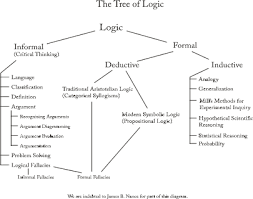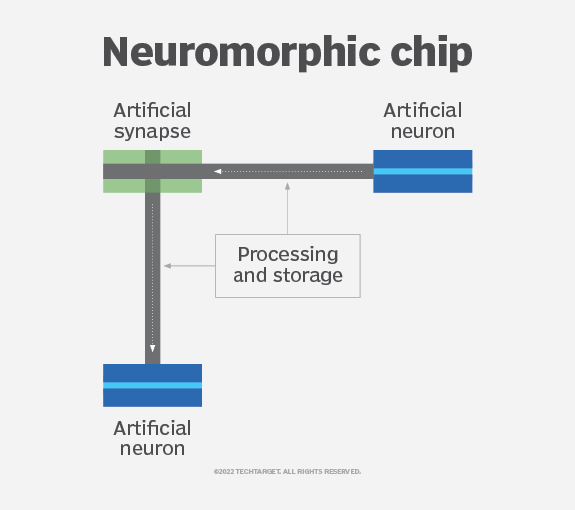Jan
12
2024
 University of Central Lancashire (UCLan) PhD student Alexia Lopez, who two years ago discovered a giant arc of galaxy clusters in the distant universe, has now discovered a Big Ring. This (if real) is one of the largest structures in the observable universe at 1.3 billion light years in diameter. The problem is – such a large structure should not be possible based on current cosmological theory. It violates what is known as the Cosmological Principle (CP), the notion that at the largest scales the universe is uniform with evenly distributed matter.
University of Central Lancashire (UCLan) PhD student Alexia Lopez, who two years ago discovered a giant arc of galaxy clusters in the distant universe, has now discovered a Big Ring. This (if real) is one of the largest structures in the observable universe at 1.3 billion light years in diameter. The problem is – such a large structure should not be possible based on current cosmological theory. It violates what is known as the Cosmological Principle (CP), the notion that at the largest scales the universe is uniform with evenly distributed matter.
The CP actually has two components. One is called isotropy, which means that if you look in any direction in the universe, the distribution of matter should be the same. The other component is homogeneity, which means that wherever you are in the universe, the distribution of matter should be smooth. Of course, this is only true beyond a certain scale. At small scale, like within a galaxy or even galaxy cluster, matter is not evenly distributed, and it does matter which direction you look. But at some point in scale, isotropy and heterogeneity are the rule. Another way to look at this is – there is an upper limit to the size of any structure in the universe. The Giant Arc and Big Ring are both too big. If the CP is correct, they should not exist. There are also a handful of other giant structures in the universe, so these are not the first to violate the CP.
The Big Ring is just that, a two-dimensional structure in the shape of a near-perfect ring facing Earth (likely not a coincidence but rather the reason it was discoverable from Earth). Alexia Lopez later discovered that the ring is actually a corkscrew shape. The Giant Arc is just that, the arc of a circle. Interestingly, it is in the same region of space and the same distance as the Big Ring, so the two structures exist at the same time and place. This suggests they may be part of an even bigger structure.
How certain are we that these structures are real, and not just a coincidence? Professor Don Pollacco, of the department of physics at the University of Warwick, said the probability of this being a statistical fluke is “vanishingly small”. But still, it seems premature to hang our hat on these observations just yet. I would like to see some replications and attempts at poking holes in Lopez’s conclusions. That is the normal process of science, and it takes time to play out. But so far, it seems like solid work.
Continue Reading »
Jan
08
2024
 Categorization is critical in science, but it is also very tricky, often deceptively so. We need to categorize things to help us organize our knowledge, to understand how things work and relate to each other, and to communicate efficiently and precisely. But categorization can also be a hindrance – if we get it wrong, it can bias or constrain our thinking. The problem is that nature rarely cleaves in straight clean lines. Nature is messy and complicated, almost as if it is trying to defy our arrogant attempts at labeling it. Let’s talk a bit about how we categorize things, how it can go wrong, and why it matters.
Categorization is critical in science, but it is also very tricky, often deceptively so. We need to categorize things to help us organize our knowledge, to understand how things work and relate to each other, and to communicate efficiently and precisely. But categorization can also be a hindrance – if we get it wrong, it can bias or constrain our thinking. The problem is that nature rarely cleaves in straight clean lines. Nature is messy and complicated, almost as if it is trying to defy our arrogant attempts at labeling it. Let’s talk a bit about how we categorize things, how it can go wrong, and why it matters.
We can start with an example that might seem like a simple category – what is a planet? Of course, any science nerd knows how contentious the definition of a planet can be, which is why it is a good example. Astronomers first defined them as wandering stars – the points of light that were not fixed but seemed to wonder throughout the sky. There was something different about them. This is often how categories begin – we observe a phenomenon we cannot explain and so the phenomenon is the category. This is very common in medicine. We observe a set of signs and symptoms that seem to cluster together, and we give it a label. But once we had a more evolved idea about the structure of the universe, and we knew that there are stars and stars have lots of stuff orbiting around them, we needed a clean way to divide all that stuff into different categories. One of those categories is “planet”. But how do we define planet in an objective, intuitive, and scientifically useful way?
This is where the concept of “defining characteristic” comes in. A defining characteristic is, “A property held by all members of a class of object that is so distinctive that it is sufficient to determine membership in that class. A property that defines that which possesses it.” But not all categories have a clear defining characteristic, and for many categories a single characteristic will never suffice. Scientists can and do argue about which characteristics to include as defining, which are more important, and how to police the boundaries of that characteristic.
Continue Reading »
Jan
04
2024
 This is one of the biggest thought experiments in science today – as we look for life elsewhere in the universe, what should we be looking for, exactly? Other stellar systems are too far away to examine directly, and even our most powerful telescopes can only resolve points of light. So how do we tell if there is life on a distant exoplanet? Also, how could we detect a distant technological civilization?
This is one of the biggest thought experiments in science today – as we look for life elsewhere in the universe, what should we be looking for, exactly? Other stellar systems are too far away to examine directly, and even our most powerful telescopes can only resolve points of light. So how do we tell if there is life on a distant exoplanet? Also, how could we detect a distant technological civilization?
Here is where the thought experiment comes in. We know what life on Earth is like, and we know what human technology is like, so obviously we can search for other examples of what we already know. But the question is – how might life different from life on Earth be detected? What are the possible signatures of a planet covered in living things that perhaps look nothing like life on Earth. Similarly, what alien technologies might theoretically exist, and how could we detect them?
A recent paper explores this question from one particular angle – are there conditions on a planet that are necessary for the development of technology? They hypothesize that there is an “oxygen bottleneck”, a minimum concentration of oxygen in the atmosphere of a planet, that is necessary for the development of advanced technology. Specifically they argue that open air combustion, which requires a partial pressure (PO2) of oxygen of ≥ 18% (it’s about 21% on Earth), is necessary for fire and metallurgy, and that these are necessary stepping stones on the path to advanced technology.
Continue Reading »
Jan
02
2024
 What everyone knew was coming is now official – 2023 was the warmest year on record. This means we can also say that the last 10 years are the hottest decade on record. 2023 dethrones 2016 as the previous warmest year and bumps 2010 out of the top 10. Further, in the last half of the year, many of the months were the hottest months on record, and by a large margin. September’s average temperature was 1.44 C above pre-industrial levels, beating the previous record set in 2020 of 0.98 C. The average for 2023 is 1.4 C, beating the previous record in 2016 of 1.2 C. This also makes 2023 probably the warmest year in the last 125,000 years.
What everyone knew was coming is now official – 2023 was the warmest year on record. This means we can also say that the last 10 years are the hottest decade on record. 2023 dethrones 2016 as the previous warmest year and bumps 2010 out of the top 10. Further, in the last half of the year, many of the months were the hottest months on record, and by a large margin. September’s average temperature was 1.44 C above pre-industrial levels, beating the previous record set in 2020 of 0.98 C. The average for 2023 is 1.4 C, beating the previous record in 2016 of 1.2 C. This also makes 2023 probably the warmest year in the last 125,000 years.
There is no mystery as to why this is happening, and it’s exactly what scientists predicted would happen. Remember the global warming “pause” that was allegedly happening between 1998 and 2012? This was the pause that never was, a short term fluctuation in the long term trend and a bit of statistical voodoo. Global warming deniers were declaring that global warming was over, it was never real, it was just a statistical fluke and the world was regressing back to the mean. Meanwhile, scientists said the long term trend had not altered and predicted the next decade would be even warmer. In retrospect, it turns out that during the alleged “pause” more heat was going into the oceans and was not fully reflected in surface temperatures.
The best test of a scientific hypothesis is its ability to make predictions about future data. The deniers were predicting that the Earth would simply return to baseline temperatures, while the scientific community were united in predicting that the next decade (now the past decade) would see continued warming.
Continue Reading »
Dec
21
2023
 This is not exactly a “best of” because I don’t know how that applies to science news, but here are what I consider to be the most impactful science news stories of 2023 (or at least the ones that caught by biased attention).
This is not exactly a “best of” because I don’t know how that applies to science news, but here are what I consider to be the most impactful science news stories of 2023 (or at least the ones that caught by biased attention).
This was a big year for medical breakthroughs. We are seeing technologies that have been in the works for decades come to fruition with specific applications. The FDA recently approved a CRISPR treatment for sickle cell anemia. The UK already approved this treatment for sickle cell and beta thalassemia. This is the first CRISPR-based treatment approval. The technology itself is fascinating – I have been writing about CRISPR since it was developed, it’s a technology for making specific alterations to DNA at a specific target site. It can be used to permanently inactivate a gene, insert a new gene, or reversibly turn a gene off and then on again. Importantly, the technology is faster and cheaper than prior technologies. It is a powerful genetics research tool, and is a boon to genetic engineering. But since the beginning we have also speculated about its potential as a medical intervention, and now we have proof of concept.
The procedure is to take bone-marrow from the patient, then use CRISPR to silence a specific gene that turns off the production of fetal hemoglobin. The altered blood stem cells are then transplanted back into the patient. Both of these diseases, sickle cell and thalassemia, are genetic mutations of adult hemoglobin. The fetal hemoglobin is unaffected. By turning back on the production of fetal hemoglobin, this effectively reduces or even eliminates the negative effects of the mutations. Sickle cell patients do not go into crisis and thalassemia patients do not need constant blood transfusions.
This is an important milestone – we can control the CRISPR technique sufficiently that it is a safe and effective tool for treating genetically based diseases. This does not mean we can now cure all genetic diseases. There is still the challenge of getting the CRISPR to the right cells (using some vector). Bone-marrow based disease is low hanging fruit because we can take the cells to the CRISPR. But still – this is a lot of potential disease targets – anything blood or bone marrow based. Also, any place in the body where we can inject CRISPR into a contained space, like the eye, is an easy target. Other targets will not be as easy, but that technology is advancing as well. This all opens up a new type of medical intervention, through precise genetic alteration. Every future story about this technology will likely refer back to 2023 as the year of the first approved CRISPR treatment.
Continue Reading »
Dec
19
2023
 One of the biggest questions of exoplanet astronomy is how many potentially habitable planets are out there in the galaxy. By one estimate the answer is 6 billion Earth-like planets in the Milky Way. But of course we have to set parameters and make estimates, so this number can vary significantly depending on details.
One of the biggest questions of exoplanet astronomy is how many potentially habitable planets are out there in the galaxy. By one estimate the answer is 6 billion Earth-like planets in the Milky Way. But of course we have to set parameters and make estimates, so this number can vary significantly depending on details.
And yet – how many exoplanets have we discovered so far that are “Earth-like”, meaning they are a rocky world orbiting a sun-like star in the habitable zone, not tidally locked to their parent star, with the potential for liquid water on the surface? Zero. Not a single one, out of the over 5,500 exoplanets confirmed so far. This is not a random survey, however, because it is biased by the techniques we use to discover exoplanets, which favor larger worlds and worlds closer to their stars. But still, zero is a pretty disappointing number.
I am old enough to remember when the number of confirmed exoplanets was also zero, and when the first one was discovered in 1995. Basically since then I have been waiting for the first confirmed Earth-like exoplanet. I’m still waiting.
A recent simulation, if correct, may mean there are even fewer Earth-like exoplanets than we think. The study looks at the transition from a planet like Earth to one like Venus, where a runaway greenhouse effect leads to a dry and sterile planet with a surface temperature of hundreds of degrees. The question being explored by this simulation is this – how delicate is the equilibrium we have on Earth? What would it take to tip the Earth into a similar climate as Venus? The answer is – not much.
Continue Reading »
Dec
18
2023
 Even high quality media outlets will get it wrong from time to time. I notice this tends to happen when there is a mature and sophisticated propaganda campaign that has had enough time and reach to essentially gaslight a major portion of the public, and further where a particular expertise is required to understand why the propaganda is false. This is true, for example, for acupuncture, where even medical experts don’t have sufficient topic expertise to know why the claims being made are largely pseudoscience.
Even high quality media outlets will get it wrong from time to time. I notice this tends to happen when there is a mature and sophisticated propaganda campaign that has had enough time and reach to essentially gaslight a major portion of the public, and further where a particular expertise is required to understand why the propaganda is false. This is true, for example, for acupuncture, where even medical experts don’t have sufficient topic expertise to know why the claims being made are largely pseudoscience.
Where there is arguably the biggest gap between the scientific evidence and public opinion is genetically modified organisms (GMOs). There has been a well-funded and unfortunately successful campaign to unfairly and unscientifically demonize GMO technology, largely funded by the organic lobby but also environmental groups. Scientific pushback has ameliorated this somewhat. Further, the more time that goes by without the predicted “GMO apocalypse” the less urgent the fearmongering seems. Plus, genetic engineering works and is safe and is producing results, and people may be just getting more comfortable with it over time.
But it seems to me that there are still some people who are stuck in the anti-GMO narrative, and they are making increasingly poor and unconvincing arguments to sustain their negative attitude. An example is a recent article in The Conversation – Genetically modified crops aren’t a solution to climate change, despite what the biotech industry says. The article is by Barbara Van Dyck, who is a long time anti-GMO activist, even participating in disruptions of field trials. Let’s dive into her recent article.
Continue Reading »
Dec
15
2023
 I like to think deeply about informal logical fallacies. I write about them a lot, and even have an occasional segment of the SGU dedicated to them. They are a great way to crystalize our thinking about the many ways in which logic can go wrong. Formal logic deals with arguments that are always true, by there very construction. If A=B and B=C then A=C, is always true. Informal logical fallacies, on the other hand, are context dependent. They are a great way to police the sharpness of arguments, but they require a lot of context-dependent judgement.
I like to think deeply about informal logical fallacies. I write about them a lot, and even have an occasional segment of the SGU dedicated to them. They are a great way to crystalize our thinking about the many ways in which logic can go wrong. Formal logic deals with arguments that are always true, by there very construction. If A=B and B=C then A=C, is always true. Informal logical fallacies, on the other hand, are context dependent. They are a great way to police the sharpness of arguments, but they require a lot of context-dependent judgement.
For example, the Argument from Authority fallacy recognizes that a fact claim is not necessarily true just because an authority states it, but it could be true. And recognizing meaningful authority is useful, it’s just not absolute. It’s more of a probability and the weight of opinion. But authority itself does not render a claim true or false. The same is true of the Argument ad Absurdum, or the Slippery Slope fallacy – they are about taking an argument to an unjustified extreme. But what’s “extreme”? This subjectivity might cause one to think that they are therefore not legitimate logical fallacies at all, but that’s just the False Continuum logical fallacy – the notion that if there is not a sharp demarcation line somewhere along a spectrum, then we can ignore or deny the extremes of the spectrum.
I recently received the following question about a potential informal fallacy:
I’ve noticed this more and more with politics. Party A proposes a ludicrous solution to an issue. Party B objects to the policy. Party A then accuse Party B of being in favour of the issue. It’s happening in the immigration debate in the UK where the government are trying to deport asylum seekers to Rwanda (current capacity around 200 per year) in order to solve our “record levels of immigration” (over 700,000 this year of which less than 50,000 are asylum seekers). When you object to the policy you are accused of being in support of unlimited immigration.
This feels like something wider, that may even be a logical fallacy, but I’ve not been able to locate anything describing it. I can imagine it comes up in Skepticisim relatively often.
Continue Reading »
Dec
14
2023
 Australian researchers at the International Centre for Neuromorphic Systems (ICNS) at Western Sydney University have announced they are building what they are calling Deep South (based on IBM’s Deep Blue). This will be the world’s largest neuromorphic supercomputer, with 228 trillion synaptic operations per second. This won’t be the fastest supercomputer in the world, which is currently reaching the exascale with quintillions of operations per second. So then what’s the big deal? It probably has something to do with the “neuromorphic” part.
Australian researchers at the International Centre for Neuromorphic Systems (ICNS) at Western Sydney University have announced they are building what they are calling Deep South (based on IBM’s Deep Blue). This will be the world’s largest neuromorphic supercomputer, with 228 trillion synaptic operations per second. This won’t be the fastest supercomputer in the world, which is currently reaching the exascale with quintillions of operations per second. So then what’s the big deal? It probably has something to do with the “neuromorphic” part.
The basic definition of a neuromorphic computer is one based on or inspired by the design of biological systems – something more closely resembling neurons and synapses. Conventional computers have central processing units and separate memory storage. But they seem to get the job done. Neuromorphic computers have components that function more like neurons and synapses which are both memory and processing at the same time. Also, the process is massively parallel and distributed. But if this is not necessarily faster than conventional computers, why bother?
There are two reasons, but the first is efficiency. The human brain is a powerful computer, and yet it operates only 20 watts of power. That is incredibly more energy efficient than any computer, and researchers believe this is because of the architecture. Right now specific computer applications use the energy of small countries. Crypto uses 127 terawatt hours per year, more than Norway. Data centers use 340 TWh. A Chat GPT query uses 15 times the energy as a normal Google query, and again is already getting to small-country levels of energy use. The AI revolution, whatever else you may think about it, is energy hungry.
Continue Reading »
Dec
12
2023
 Scientists have developed virtual reality goggles for mice. Why would they do this? For research. The fact that it’s also adorable is just a side effect.
Scientists have developed virtual reality goggles for mice. Why would they do this? For research. The fact that it’s also adorable is just a side effect.
One type of neuroscience research is to expose mice in a laboratory setting to specific tasks or stimuli while recording their brain activity. You can have an implant, for example, measure brain activity while it runs a maze. However, having the mouse run around an environment puts limits on the kind of real time brain scanning you can do. So researchers have been using VR (virtual reality) for about 15 years to simulate an environment while keeping the mouse in a more controlled setting, allowing for better brain imaging.
However, this setup is also limiting. The VR is really just surrounding wrap-around screens. But it is technically challenging to have overhead screens, because that is where the scanning equipment is, and there are still visual clues that the mouse is in a lab, not the virtual environment. So this is an imperfect setup. k
The solution was to build tiny VR goggles for mice. The mouse does not wear the goggles like a human wears a VR headset. They can’t get them that small yet. Rather, the goggles are mounted, and the mouse is essentially placed inside the goggle while standing on a treadmill. The mouse can therefore run around while remaining stationary on the treadmill, and keep his head in the mounted VR goggles. This has several advantages over existing setups.
Continue Reading »
 University of Central Lancashire (UCLan) PhD student Alexia Lopez, who two years ago discovered a giant arc of galaxy clusters in the distant universe, has now discovered a Big Ring. This (if real) is one of the largest structures in the observable universe at 1.3 billion light years in diameter. The problem is – such a large structure should not be possible based on current cosmological theory. It violates what is known as the Cosmological Principle (CP), the notion that at the largest scales the universe is uniform with evenly distributed matter.
University of Central Lancashire (UCLan) PhD student Alexia Lopez, who two years ago discovered a giant arc of galaxy clusters in the distant universe, has now discovered a Big Ring. This (if real) is one of the largest structures in the observable universe at 1.3 billion light years in diameter. The problem is – such a large structure should not be possible based on current cosmological theory. It violates what is known as the Cosmological Principle (CP), the notion that at the largest scales the universe is uniform with evenly distributed matter.
 Categorization is critical in science, but it is also very tricky, often deceptively so. We need to categorize things to help us organize our knowledge, to understand how things work and relate to each other, and to communicate efficiently and precisely. But categorization can also be a hindrance – if we get it wrong, it can bias or constrain our thinking. The problem is that nature rarely cleaves in straight clean lines. Nature is messy and complicated, almost as if it is trying to defy our arrogant attempts at labeling it. Let’s talk a bit about how we categorize things, how it can go wrong, and why it matters.
Categorization is critical in science, but it is also very tricky, often deceptively so. We need to categorize things to help us organize our knowledge, to understand how things work and relate to each other, and to communicate efficiently and precisely. But categorization can also be a hindrance – if we get it wrong, it can bias or constrain our thinking. The problem is that nature rarely cleaves in straight clean lines. Nature is messy and complicated, almost as if it is trying to defy our arrogant attempts at labeling it. Let’s talk a bit about how we categorize things, how it can go wrong, and why it matters. This is one of the biggest thought experiments in science today – as we look for life elsewhere in the universe, what should we be looking for, exactly? Other stellar systems are too far away to examine directly, and even our most powerful telescopes can only resolve points of light. So how do we tell if there is life on a distant exoplanet? Also, how could we detect a distant technological civilization?
This is one of the biggest thought experiments in science today – as we look for life elsewhere in the universe, what should we be looking for, exactly? Other stellar systems are too far away to examine directly, and even our most powerful telescopes can only resolve points of light. So how do we tell if there is life on a distant exoplanet? Also, how could we detect a distant technological civilization? What everyone knew was coming is now official – 2023 was the warmest year on record. This means we can also say that the last 10 years are the
What everyone knew was coming is now official – 2023 was the warmest year on record. This means we can also say that the last 10 years are the  This is not exactly a “best of” because I don’t know how that applies to science news, but here are what I consider to be the most impactful science news stories of 2023 (or at least the ones that caught by biased attention).
This is not exactly a “best of” because I don’t know how that applies to science news, but here are what I consider to be the most impactful science news stories of 2023 (or at least the ones that caught by biased attention). One of the biggest questions of exoplanet astronomy is how many potentially habitable planets are out there in the galaxy.
One of the biggest questions of exoplanet astronomy is how many potentially habitable planets are out there in the galaxy.  Even high quality media outlets will get it wrong from time to time. I notice this tends to happen when there is a mature and sophisticated propaganda campaign that has had enough time and reach to essentially gaslight a major portion of the public, and further where a particular expertise is required to understand why the propaganda is false. This is true, for example,
Even high quality media outlets will get it wrong from time to time. I notice this tends to happen when there is a mature and sophisticated propaganda campaign that has had enough time and reach to essentially gaslight a major portion of the public, and further where a particular expertise is required to understand why the propaganda is false. This is true, for example,  I like to think deeply about
I like to think deeply about  Australian researchers at the International Centre for Neuromorphic Systems (ICNS) at Western Sydney University
Australian researchers at the International Centre for Neuromorphic Systems (ICNS) at Western Sydney University  Scientists have developed
Scientists have developed 




